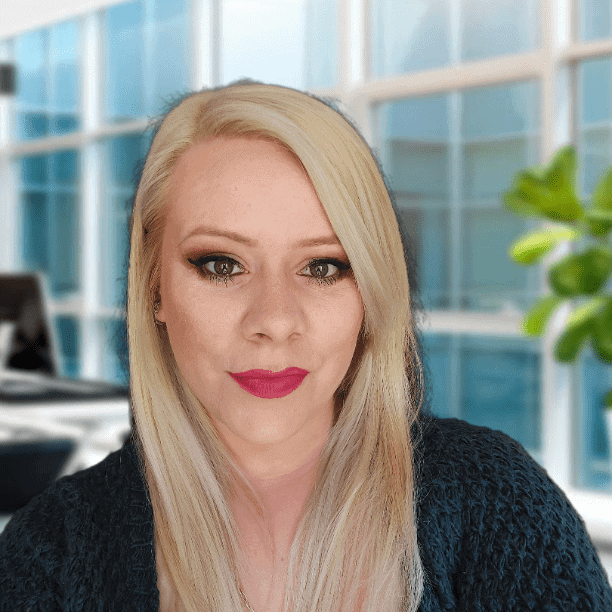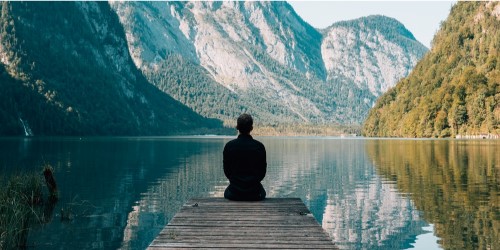
In the moss-covered stillness of New York’s Catskill Mountains, Perdita Finn and Clark Strand are quietly leading a revolution of the soul. As co-founders of The Way of the Rose, a feral fellowship rooted in ancient rosary practice and the radical power of the Divine Feminine, the couple is reweaving threads of forgotten mysticism, ancestral connection, and spiritual community. Their groundbreaking book The Way of the Rose: The Radical Path of the Divine Feminine Hidden in the Rosary has inspired thousands to leave behind linear, patriarchal systems and instead gather in circles—where every voice is sacred and the wisdom of the earth, the dead, and the unseen is honored. Now, as they prepare to release their next collaborative work Circles Not Lines: Spiritual Community Beyond Patriarchy, Perdita and Clark invite us deeper into a world where devotion flows from ecology rather than theology, and where the rosary becomes a key not to religion, but to enchantment, intimacy, and liberation. In this conversation, Mystic Mag explores the power of praying with the ancestors, the healing work of recovering intuitive magic, and how creating spiritual kinship beyond institutions may be the most radical act of all.
“Ecology not theology” is such a compelling phrase. Can you share what that means to you personally—and how it shapes your spiritual practice and daily life?
Clark: When I was a Zen Buddhist monk during the 1980s, I was completely devoted to Zen Buddhism for about 14 years—a real hardliner. I was the kind of student who made the other Zen students nervous because I took it all so seriously. I left the monastery in 1990, and when I left, I became, I suppose you could say, spiritually promiscuous.
I was unmoored—deeply curious, but also uncertain. At the very bottom of my concern was this growing sense that the religions of the world were not going to be up to the challenge of climate change.
I first learned about climate change in the early 1990s through my brother, a population geneticist conducting some of the earliest studies on global plant populations. Even then, he was already seeing a massive crash in plant populations. He was the first person to talk to me seriously about climate change and connected me with some of the scientists at Climate.org, which was one of the earliest climate-focused think tanks.
In the years that followed, I explored many different spiritual traditions, looking for any kind of wisdom that might be relevant or useful in an age of species extinction and ecological crisis. I read a great deal—articles, texts, teachings from various traditions—as part of this exploration.
Eventually, I became involved in a kind of think tank associated with The Washington Post and Newsweek. David Waters launched a blog called On Faith, where a panel of about 20 contributors, myself included, would respond to weekly questions. We would each write our thoughts and collectively pool our insights.
It was during that time that I began to develop a simple test for evaluating the spiritual scriptures of the world: not through theology, but through ecology.
The idea I arrived at was: Ecology, not theology.
In other words, I set aside the endless theological speculation, obfuscation, and invention. Instead, I searched for anything in sacred texts that had real ecological resonance or value. If I found something, I would isolate it, examine it closely, and then compare it with similar insights from other traditions. I did a lot of cross-pollinating and cross-referencing to understand the ecological teachings embedded in the great religious traditions—and to explore how they had been lost, forgotten, or overwritten by the anthropocentric project that organized religion often represents.
That’s how the idea was born.
Perdita: I also have a more intimate, personal response to my own disaffection with religion.
I grew up in an atheist Bohemian family, so naturally, I was very interested in religion and spirituality—precisely because they were forbidden. But, you know, I had an abortion the day after I converted to Catholicism. And it didn’t go very well. Still, I was searching. I was searching for something.
When Clark and I met, he was also engaged in Zen Buddhism. But after the birth of my two children, I felt excluded from the world’s religions—quite literally and practically. I once entered the zendo with my baby in a Snugli. I was a strong meditator, and the Zen master had given me permission. I said, “I can nurse and meditate at the same time. It’s great.”
But as the baby began making cooing, happy noises while nursing, I was asked to leave—not by all the participants, but by the people in charge. Just two people. I remember asking, “What’s going on?”
Because if a baby nursing at its mother’s breast is a disruption to your spiritual practice, then your spiritual practice is set against the world.
Later, we joined an Episcopal church—me, the ex-Catholic, ex-Buddhist. I ended up teaching Sunday school to the kids who were kicked out of the service so the adults could do the “important” spiritual work. Two minutes of that, and I said, “Forget it—we’re going home.”
Nature was always our church. The animals, the plants, the woods, the forests. We rescued animals, adopted them. We knew their names.
Clark once did an experiment years ago: he asked people to write down the names of every tree that surrounded their home—by name. Then he said, “Now write down the names of all the celebrities you know.”
Do you know the names of the beings who live right around you better than you know the celebrities? We live in this lopsided world.
I was deeply inspired by Octavia Butler, the great fantasy writer. In Parable of the Sower, that visionary post-apocalyptic book, she wrote: “God is Change.” But I’m not very interested in God—not in the traditional sense. It’s not a question of belief or disbelief.
I believe in the mountains. I believe in the trees. I believe in the dirt. I believe in the darkness. I believe that the moon waxes and wanes, and the tides come and go. All things die. All things return.
Nature is change. Nature is perpetual change. And any idea of permanence—whether it’s a permanent heaven or a fixed Eden—sets itself against the blossoming, living force that is the natural world.
When Clark and I met in New York City, we almost immediately found our way into the mountains. We discovered a love for hiking in the woods and being close to the Earth. We’ve always been deeply grounded in the natural world in a very specific, intentional way.
And I think it saved our children’s lives.
Our daughter is a successful writer. She writes powerfully about chronic illness and the fate of the Earth. Our son is an organic permaculture gardener—he’s transforming our backyard into a food garden.
For me, these things are alive. They are real. And I remember, as a young mother, wondering:
Where is the spiritual community that allows for this? That puts children at the center of the circle, instead of in the back room?
The Way of the Rose invites people to reclaim the Rosary outside of institutional religion. What have been some of the most surprising transformations you’ve seen in those who’ve taken up this path?
Perdita: You know, we always say—how does a person like Clark get raised? A Southern Presbyterian who became a Buddhist monk at 18. How does he end up praying the Rosary with devotion? How does an ex-atheist, ex-Catholic, ex-Buddhist end up praying the Rosary?
Well, I often invite readers to consider this: beads are the oldest spiritual practice in the world. We’ve found beads in Morocco that are as old as 150,000 years. That’s 150,000 years! They go back to the very beginning of our species—probably even earlier, because some beads, made from sand, clay, or rose petals (like the ones I’m holding now), haven’t survived the aeons. But we do have beads made from shell and stone.
And let me tell you—making a bead is a lot of work. It’s labor-intensive. So, what was it about beads that made our ancestors want to create them, especially during moments of adversity—ice ages, climate shifts, super eruptions—things we can hardly imagine? They made beads.
I always invite people reading or listening to find a bead on their body right now. Maybe it’s an earring. Maybe it’s a necklace. Maybe it’s just a button on your shirt. And if you don’t have a bead, take a little piece of fuzz and roll it between your fingers. Just roll it between your thumb and index finger.
Now observe: your breath, your vagus nerve, your heartbeat. You’ll probably start to notice yourself settling down. That gesture—rolling a bead—is incredibly soothing.
Then you know the answer. It’s the first gesture we make as infants. We reach for the nipples.
Babies reach for the nipple and roll it between their thumb and index finger. And the milk lets down. But not just the milk. A hormone called prolactin releases in both the mother’s body and the baby’s body. You know that feeling when you start to nurse—your whole body just relaxes. It’s kind of ecstatic.
All those monks trying to reach altered states? Mothers are already there. Prolactin lets down, right? And guess what—it also lets down when we hold a bead and roll it between our fingers.
Yeah, it’s the attachment.
Exactly. And what we’re really doing—the reason people make beads—is to feel close to their mothers. To Mother Earth. To ancestral mothers. Biological mothers. Spiritual mothers. People want to feel mothered. They want to know they’re connected. Because we are primates. We’re meant to hold on. If you don’t hold on, you die.
We’ve got to know what we’re holding on to. Are we holding on to addiction? To misery? To shopping and stuff? Or are we holding on to our mother?
As a young, overwhelmed, and exhausted mother, I needed something to hold on to—and I began praying the Rosary. I couldn’t explain it, Katarina. I didn’t understand it. But at night, I’d be saying my beads, and my children—one on each side—would hold my hair and run their fingers through it as they fell asleep. You know how children do that. It soothes them. And it soothes you.
And I would be holding my Rosary, running the beads through my fingers. Our prayers, our bodies, our touch—they were all entangled. And that became my spiritual practice.
As for Clark and how he came to the Rosary—well…
Clark: The way I came to the Rosary was mysterious. We can talk more about that later if you’d like. But as Freddy’s discussion about beads shows—beads go back a long way. And yet, when the average person sees a Catholic Rosary, they think of it as a symbol—maybe of the anti-abortion movement, or of Catholic piety.
But this tradition of using beads for mantric-style prayer is very ancient. There was a famous scholar of the Vedas named Fritz Staal. He was the world’s leading authority on mantra. And he believed that mantra predates language. That mantra was, in fact, how language began.
Like birds with their songs, humans had ritualistic sounds—used during fire-making, bonding, grooming—rituals like apes still do. Over time, these ritual utterances became words. Mantras were the seeds of speech. Staal believed the closest modern equivalent to a mantra is birdsong.
In the beginning, people had rituals with beads connected to the Great Mother. Those ancient goddess figurines from the Paleolithic? They were like the first rosaries. People held them, rubbed them, uttered prayers or spells calling upon their relationship with the Earth, the source of food, light, and life.
So the Rosary is a direct descendant of these prehistoric practices. By the time you get to medieval Europe, people are grafting the Rosary onto an ancient spiritual rootstock. They rename the Great Mother “Mary” and begin to pray to her.
Here’s the thing: in the Middle Ages, most people were only thinly Christianized. Paganism was alive and well. Most priests couldn’t even read the Bible. But people still had their rituals—like weaving roses into a crown and placing it on the statue of the Great Mother. This became part of the Marian tradition.
They would pray, not to God or Jesus, but directly to her. They would say their petitions while repeating a kind of spell—eventually replaced by the Hail Mary.
And what’s the difference between a spell and a prayer?
Nothing—except how it’s framed.
Perdita: Clark and I are fascinated by medieval miracle stories of Our Lady. They’re incredibly earthy: “I lost my cow.” “I have a boil.” “My husband’s in prison.” These weren’t theological prayers. These were real-life concerns—livelihood, health, survival. People prayed their hearts out, and when miracles happened, they shared those stories with their community.
We’ve often been critical of what we call the “upper-middle way” of American Buddhism—because it focuses so much on disposable income and expensive workshops. But for generations, grandmothers have prayed their way through adversity with a house full of children. They lived in an economy of prayer, not money.
And if you speak to immigrants crossing the border today, you’ll often find that the only thing they carry with them is a Rosary. They have prayed their way through hellscapes we can’t even imagine.
Our ancient ancestors lived in an economy of prayer. They prayed to find food. They prayed for healing herbs. They prayed for shelter, for fire. Prayer was their conversation with Mother Earth.
And in our Way of the Rose community, we invite people to return to that. To pray for their heart’s desire.
Because asking yourself what you want may be the most radical question in a capitalist culture. Not what your country, your religion, or your ideology tells you to want. What do you want?
And what do people want?
They want to heal. Their bodies. Their relationships. Their lives.
Clark: The general trajectory for someone coming into our rosary community is, first of all, the very liberating idea that they can pray the rosary without being Catholic—or even religious. They don’t need any religious affiliation at all. They can pray the rosary for their heart’s desire.
The next thing that typically happens along that path is the realization that they often don’t actually know what their heart’s desire is. Some people do come in during a crisis and think they know—many come because they have cancer or are facing financial distress. But even then, what often unfolds over the first few months—or the first year—is the discovery that underneath that initial reason lies a deeper heart’s desire.
For example, a person recovering from cancer may come to realize that what they truly want is simply to live long enough to see their grandchild grow up. That suddenly becomes a powerful, motivating force in their life. Someone in financial distress may uncover a deeper yearning—not just for money, but for a healthy sense of self-worth that allows them to be fairly compensated for their time and effort.
Once they begin to pray for that, they stop settling for jobs that leave them underpaid or unfulfilled. All kinds of shifts begin to happen. People start to feel grounded again.
And because we’re praying together as a group, they receive support—not just emotionally or spiritually, but also from witnessing others go through similar transformations. There’s an excitement that comes from seeing that shared growth.
It’s really a remarkable thing to witness. In many ways, it’s the opposite of what you often find in a traditional church setting.
What type of services do you offer?
Perdita: Here’s the thing. Given our experience with religion, Clark and I really wanted to consider the most radically inclusive way to protect our community from the worst excesses of organized religion. We asked ourselves: What is it that makes religion so harmful?
And so, we came up with what we call the Five Petals or Five Principles—a nod to the wild rose, which has five petals. These principles are what help keep us “wild.”
Everything we offer at wayoftherose.org is:
1. 100% Free.
Nothing costs any money. Every circle we offer is free. Now, occasionally people might meet in person at a local church and pass the hat for a dollar or two to cover rent—you know what I mean—but we don’t. Clark and I will not teach or do anything related to Way of the Rose that involves payment. It’s 100% free.
All of our rosary-related activities are free.
We wrote a book, The Way of the Rose, to help people understand that you can pray the rosary without being religious. It’s available in Kindle, audiobook, and print formats. But everything you need to pray the rosary is also available for free on our website. We’ve put it all up there—guides, prayers, everything you need to join or start a circle.
We offer up to 11 or 12 Zoom circles a day, with people joining us from all over the world. It can be incredibly powerful to pray the rosary alongside someone in Australia, someone in Moscow, someone in Canada—people united in devotion to the Mother, all asking, What do I want?
These are regular meetings at set times, so you actually get to know people from around the world. It builds real community.
Here are the Five Principles that guide Way of the Rose:
1. Everything is free.
2. No hierarchy. We don’t have leaders, teachers, masters, experts, or levels. There’s no inner circle or outer circle. No priests or priestesses. No special outfits, badges, or training programs.
Anyone can lead a Way of the Rose circle—even a five-year-old. We have a super simple meeting script, and yes, we’ve had children lead meetings. Children can teach us. If you pray with a child, they’ll show you what it means to follow the heart’s desire.
3. The rosary teaches itself.
It couldn’t be simpler. I’ve said before: an average eight-year-old with a diagram and a copy of the prayers can learn the rosary in half an hour. There’s no secret handshake, no secret initiation.
4. We pray the rosary for our heart’s desire, not for any group agenda.
Groups often subsume the radical individuality and imagination of a person to serve a collective cause. The Catholic Church, for example, co-opted the rosary and turned it into a political weapon—like using it to fight abortion—turning what was once a magical object in the hands of grandmothers into a symbol of anti-feminism.
We support no political or external causes as a group. That doesn’t mean people in the community don’t have their own powerful callings. One woman in our group is working to get girls out of Afghanistan. Of course, her heart’s desire is to protect them, and she prays about that in our circles. Another longtime member has been doing relief work in Gaza—even before the war—and prays for her own safety and that of the people she serves.
But our meetings don’t champion political, religious, or humanitarian causes. That helps us stay focused on each person’s individual heart’s desire. That’s what keeps things wild.
5. Radical inclusivity.
We are radically inclusive. Everyone is welcome. There are no entrance exams or theological litmus tests. We don’t take attendance, and we have no creeds.
You can come and pray for whatever you want—yes, even sex and drugs if that’s your heart’s desire! That’s your path.
We stress circles of friendship rather than lineages of authority.
In your upcoming book Circles Not Lines, you explore spiritual community beyond patriarchy. What are some of the core principles or practices that make this kind of community thrive?
Our next book is about these five principles and how Clark and I came to them—through a very intensive experience within guru culture and our own horror at it. We asked ourselves: What makes people obedient? Why do they want someone telling them what to do?
We’re living in a time of rising fascism, in part because people want to be told what to do. They don’t want to ask themselves what they actually want. But if they do know what they want—if they dare to ask and answer that question—it’s the best medicine against fascism. In fact, it’s the only real protection against it: to know what it is that you want.
What we’re seeing, at least in America and increasingly in parts of Europe and elsewhere, is a cultural and political reversion toward right-leaning, fascist agendas. What allows ideologies like that to take hold is the obliteration of personal, heart-centered desires—replacing them with a kind of mob mentality. It becomes a pre-packaged set of slogans, beliefs, and attitudes, usually rooted in hate. Hatred is easy. It doesn’t require any soul-searching. It asks nothing of us except mindless agreement. It requires no intelligence, only blind obedience.
But asking yourself, What do I want?—that’s terrifying. Truly, madly, deeply—what do I want? Many people don’t feel worthy of that question. They think it’s too late, that they’ve missed their chance.
And that hurts.
But you know what? I’ve seen 80-year-olds come to this work and bloom. We have an 88-year-old woman who just joined our group, and she’s having transformative experiences with her children and grandchildren—at the end of her life—with the rosary.
Why not?



